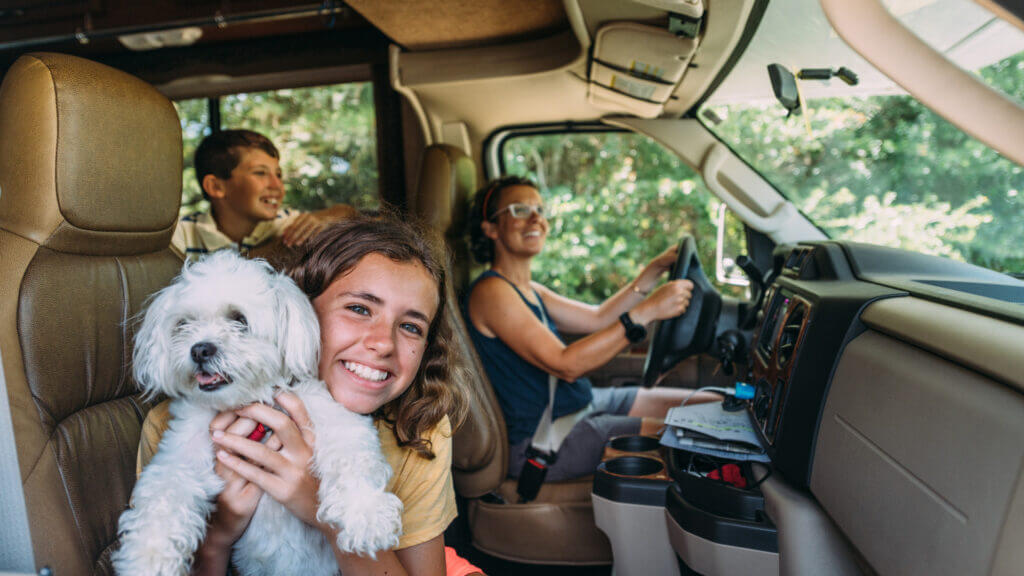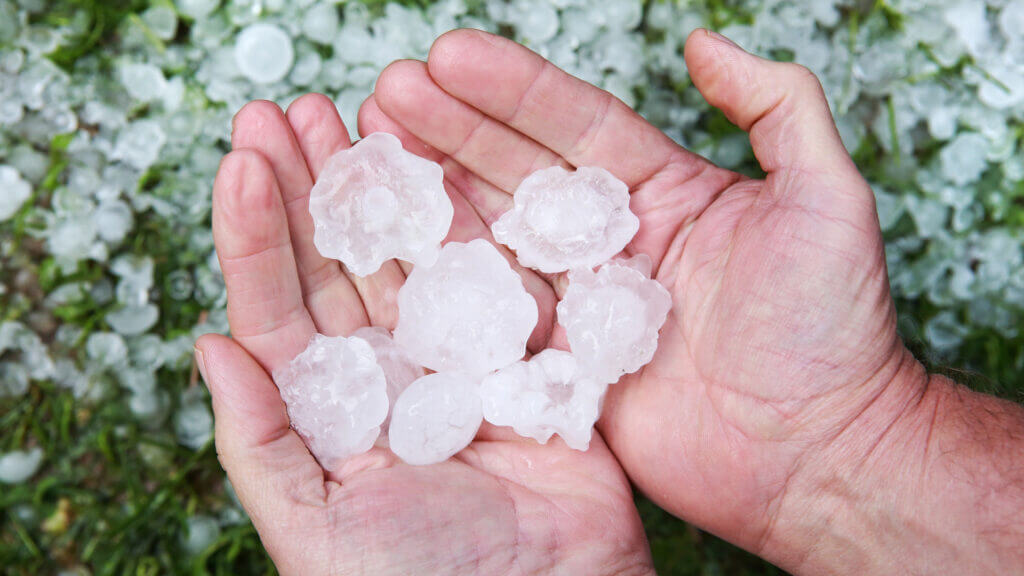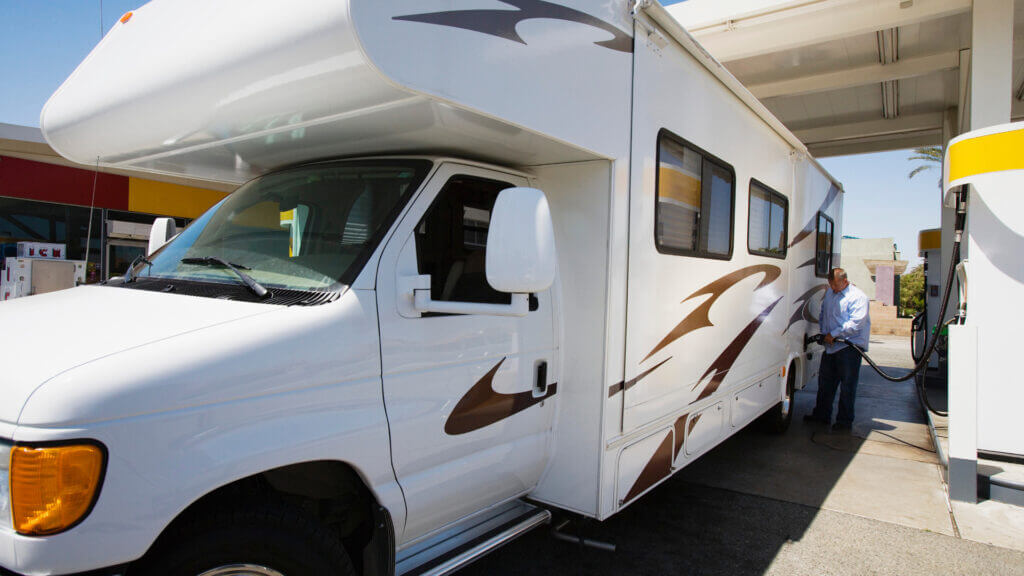Table of Contents Show
Packing up and heading on a cross-country RV trip is an incredible experience. Many adventurers dream of embarking on such an adventure, but very few make the journey. We think it’s a trip you shouldn’t wait to complete! Let’s look at five of our best tips for your first cross-country RV trip!
1. Set a Daily Travel Limit and Distance
If you’ve never towed for long distances, it can be extremely exhausting, much more than driving in a car.
A few hundred miles into your trip, the excitement will wear off, and you’ll begin to feel the fatigue caused by the open roads.
Be sure to set travel limits or distances for each day.
Many RVs have the “2 or 2” rule — 200 miles or stop driving by 2 pm. A few hundred miles might not seem like much, but towing means driving at slower speeds, limiting the distance you can cover in a single day.
Stopping before 2 pm is an excellent option as it allows you to get set up for the evening and get a good night’s rest before your next travel day.
You’ll be able to address any issues that may have arisen that day but also have time for a good meal before bed.
You can choose how to set your daily limits based on your travel style, but communicate your plans with your traveling companions.
Ensure everyone understands when you’ll be stopping for restroom breaks, meals, and fuel.
Doing so helps avoid additional pit stops that can slow you down.

2. Anticipate Extreme Weather Differences While Traveling
During your cross-country RV trip, you may experience drastic weather differences.
These differences will vary significantly if your journey involves elevation changes.
The weather at 11,000+ feet elevation is drastically different than at 2000 feet or lower.
Being prepared may mean packing sweatshirts or other cold-weather clothing if you plan to stop and explore.
No cross-country RV trip would be complete without an encounter with severe weather.
Be sure that you have a plan and are aware of weather conditions while traveling.
Having a trusty weather app that provides you with severe weather alerts based on your location could be a lifesaver during your journey.

3. Avoid Major Cities During Rush Hour
If you don’t like driving in heavy traffic, try doing it while towing an RV.
You’re likely to encounter impatient drivers trying to get to or from work.
Don’t be surprised if they won’t allow you to change lanes.
Be aware of your route and take note of major cities. Try to avoid rush hours if you plan on passing through these cities.
You can also look for bypasses for trucks or larger vehicles. It may add a few miles or minutes to your trip, but it often provides a better driving experience.

4. Always Keep Spare Tools, Spare Tires, and Have Roadside Assistance
You never know when you’re going to need to test the response time of your roadside assistance.
However, the person likely responding may not hurry as much as you’d like.
Having a generous amount of spare tools and even a spare tire on hand can majorly expedite the time it takes for you to get back on the road.
You will need to have the appropriate tools to resolve your roadside issues yourself.
Despite not knowing what or when something will break, having a handful of general repair tools is a great start.
Be sure to plan by confirming what your roadside assistance coverage entails.
You might take the opportunity to upgrade the coverage to ensure you’re ready for your cross-country RV trip.

5. Stock Up on Food and Fuel
You don’t want to run out of food or fuel while on your cross-country RV trip.
It’s always beneficial to have an excessive amount of both, as both cars and people tend to run better when they’re full.
It may shock you to hear that there can be 80+ mile stretches with no service stations, especially out west.
The lack of service stations means no food, gas, and often limited restroom facilities. You’ll want to plan your stops accordingly and make sure you fill up on fuel.
Keep in mind any elevation changes and how they will affect your fuel consumption.
Pro Tip: Use an RV travel planning app like RV Life Trip Wizard that will plan an RV safe driving route and help estimate fuel costs and stops.

Tips to Make Your Cross-Country RV Trip More Memorable
You may only remember bits and pieces of the time you spend driving during your cross-country RV trip. However, you’ll remember more vividly what you did along the route. Let’s look at a few tips for making your trip more memorable.
Eat and Shop Local for the Most Unique and Authentic Travel Experience
Try to find the local eateries, and challenge yourself to avoid chain stores and restaurants if you can. You can go to certain restaurants back home, but others you may only find where you’re adventuring.
Take the time to discover where local people eat or spend their time. It helps give you a brief glimpse into the many cultures and communities across the United States.
You never know what you’ll learn about an area when you stop along the route.
Make a List of Must-See Stops Because You Can’t See it All
Pick a handful of specific must-see stops that you want to go to. You’ll quickly realize that your family can’t see every roadside attraction that’s advertised along your route.
Allow each person to pick at least one stop along the route. This tip allows everyone to join in on the planning of the trip. You should plan your must-see spots before planning your route.
Scenic Highways and Byways are More Unique and Memorable
While interstate travel is faster, you’ll experience unforgettable views on scenic highways and byways.
It may take longer, but you’ll quickly learn that slowing down gives you more of an opportunity to take in the sights and smells of an area.
If you are towing, you’ll want to use an RV GPS or consult a trucker map to make sure roads are safe for your weight, length, or height.
Don’t try to experience scenic highways or byways if it puts you or your passengers in danger.
Embarking on your cross-country RV trip should be a treat and memorable experience. Experiencing the many small towns and communities across the United States gives you a new appreciation for its uniqueness. What was your favorite cross-country RV trip?






